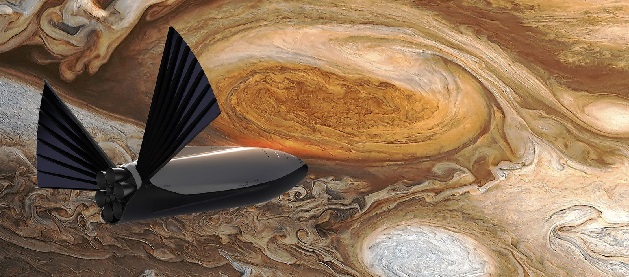In what many space geeks are calling a "Kennedy moment," Spacex founder Elon Musk laid out his most ambitious vision in flight yet: his plan to colonise Mars.
Musk's speech on Tuesday addressed the existential crisis facing humanity: that people must eventually perish on Earth in a calamitous event or become a "space species" with hope on another planet. The latter, more optimistic vision includes building a new city on Mars, where conditions such as sunlight and atmosphere are comfortable enough for humans to exist.
"It will be an incredible adventure," Musk says. "Life needs to be more than just solving problems every day. You need to wake up and be excited about the future, and be inspired and want to live."

Spacex could deploy its first spaceship, which Musk would like to dub "Heart of Gold," to Mars as early as 2023 from the Kennedy Space launch complex 39. That timeline remains fuzzy, though propulsion and structures development are underway this year. Ship testing is projected in 2018 and booster testing planned for 2019 or 2020.
But the cost of a trip to Mars is still out of reach for billionaires like Musk, let alone the average human.
"An optimistic cost number would be about $10 billion a person," Musk says. "If we can get the cost of moving to mars to around $200,000 then the probability of establishing a civilisation is very high."
Spacex plans to lower that cost by refueling in orbit and producing propellants on Mars using methane. Much like Spacex' Falcon 9 rocket which stuck the landing at sea earlier this spring, the mars rocket would land on the launchpad and relaunch with a refueling tank. Spacex would save costs by loading the spaceship with its fuel tanks almost empty in order to maximise the ship's payload, and then refuel in orbit where Earth's gravity is not a factor.
The spaceship would tower at 122m high and, with 28.7 million pounds of thrust at liftoff, would have 3.6 times the thrust as its closest peer, the Saturn V rocket. The primary structure for the spaceship would be carbon fiber with a methane-oxygen fuel. It could prove difficult preventing the structure from cracking or pressurisation that would make the carbon fiber leaky, Musk says, but he also revealed a developmental carbon fiber tank that could be used for the Mars mission.
The system would use 42 Raptor rocket engines, including 7 cluster engines for steering, as well as 14 engines on the inner ring and 21 on the outer ring. Most of the engines are in place for redundancy, but the system is designed so some engines could be lost anywhere in flight or liftoff and the mission would continue safely, Musk says.
While Musk played down the risk of deep space radiation, he says the first flight to Mars will carry a substantial amount of risk.
"I think the first journey to mars is going to be very dangerous," he says. "Are you prepared to die? Then if that’s OK, you’re a candidate for going."
Source: FlightGlobal.com


























